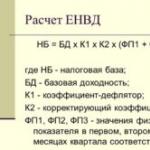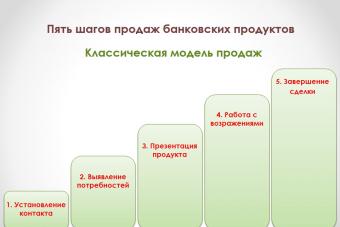Furacilin
Description:
Tradename
Furacilin
International non-proprietary name
Nitrofural
Dosage form
Tablets, 0.02 g
Compound
One tablet contains
active substance: furatsilin 0.02 g
excipient- sodium chloride
Description
Tablets of yellow or greenish-yellow color with a slightly uneven surface color, with a risk, with a height of (3.8 ± 0.2) mm, a diameter of (12 ± 0.2) mm.
Pharmacotherapeutic group
Antiseptics and disinfectants. Furan derivatives.
Code ATCD08AF
Pharmacological properties
Pharmacokinetics
Easily passes through histohematic barriers and is evenly distributed in fluids and tissues. The main route of transformation into
the body is the restoration of the nitro group. It is excreted by the kidneys and partly with bile into the intestinal lumen. The maximum concentration in the urine is reached 6 hours after ingestion.
Pharmacodynamics
An antimicrobial agent from the group of nitrofuran derivatives. It has a bacteriostatic effect on gram-positive and gram-negative bacteria (staphylococci, streptococci, E. coli, Proteus, Salmonella, Escherichia), as well as Trichomonas and Giardia.
Microorganisms resistant to antibiotics and sulfonamides are sensitive to Furacilin. Resistance to Furacilin develops slowly and does not reach a high degree.
Indications for use
Minor skin lesions (including abrasions, scratches, cracks, cuts), purulent wounds, bedsores, ulcers
Burns II and III degree
Blepharitis, conjunctivitis
Furunculosis of the external auditory canal, acute external and otitis media
Purulent-inflammatory processes of the paranasal sinuses
Pleural empyema (cavity lavage)
Osteomyelitis
Angina, stomatitis, gingivitis
Dosage and administration
Outwardly, furatsilin is used in the form of an aqueous 0.02% (1:5000) solution and an alcohol 0.066% (1:1500) solution.
- with purulent wounds, bedsores and ulcers, burns II and III degree, to prepare the granulating surface for skin grafts and for the secondary suture, irrigate the wound with an aqueous solution of furacilin and apply wet dressings
- with osteomyelitis after the operation, the cavity is washed with an aqueous solution of furacilin and a wet bandage is applied;
- with pleural empyema pus is sucked off and the pleural cavity is washed, followed by the introduction of 20-100 ml of an aqueous solution of furacilin into the cavity
- with chronic purulent otitis, furuncles of the external auditory canal and empyema of the paranasal sinuses apply in the form of drops an alcohol solution of furacilin
- for washing the maxillary (maxillary) and other paranasal sinuses use an aqueous solution of furacilin
- with conjunctivitis and scrofulous eye diseases an aqueous solution of furacilin is instilled into the conjunctival sac
- with tonsillitis and stomatitis rinsing with an aqueous solution of the drug is prescribed.
Side effects
In some cases
Dermatitis
Contraindications
Increased individual sensitivity (idiosyncrasy)
Chronic allergic dermatosis
Drug Interactions
Not installed
special instructions
To make an aqueous solution, 1 part of furacilin is dissolved in 5000 parts of isotonic sodium chloride solution or purified water. Boiling or hot water is recommended for faster dissolution. An alcohol solution of furacilin is prepared in 70% alcohol.
Childhood
Safety and efficacy in children have not been established.
Pregnancy and lactation
There are no data on adverse effects during pregnancy and lactation.
Features of the influence of the drug on the ability to drive a vehicle or potentially dangerous mechanisms
There are no data on adverse effects on the ability to drive a vehicle or potentially dangerous mechanisms.
Overdose
Not identified
Release form and packaging
Tablets of 0.02 g No. 10 in a planimetric non-cell package made of paper with a polymer coating, along with instructions for use.
Storage conditions
Store in a dry, dark place at a temperature not exceeding 30 ° C.
Keep out of the reach of children!
Shelf life
Do not use after the expiration date stated on the package.
Terms of dispensing from pharmacies
Instructions for medical use
medicinal product
Furacilin
Tradename
Furacilin
International non-proprietary name
Dosage form
Tablets 0.02 g
Compound
One tablet contains
active substance- furatsilina 0.02 g
excipient- sodium chloride
Description
Tablets of yellow or greenish-yellow color with a slightly uneven surface color, round shape, with a risk.
Pharmacotherapeutic group
Antiseptics and disinfectants. Furan derivatives.
ATX code D08AF
Pharmacological properties
Pharmacokinetics
Easily passes through histohematic barriers and is evenly distributed in fluids and tissues. The main way of transformation in the body is the reduction of the nitro group. It is excreted by the kidneys and partly with bile into the intestinal lumen. The maximum concentration in the urine is reached 6 hours after ingestion.
Pharmacodynamics
Furacilin is an antimicrobial agent from the group of nitrofuran derivatives. It has a bacteriostatic effect on gram-positive and gram-negative bacteria (staphylococci, streptococci, E. coli, Proteus, Salmonella, Escherichia), as well as Trichomonas and Giardia.
Microorganisms resistant to antibiotics and sulfonamides are sensitive to Furacilin. Resistance to Furacilin develops slowly and does not reach a high degree.
Indications for use
minor skin lesions (including abrasions, scratches, cracks, cuts), purulent wounds, bedsores, ulcers
burns II and III degree
blepharitis, conjunctivitis
furunculosis of the external auditory canal, acute external and otitis media
purulent-inflammatory processes of the paranasal sinuses
pleural empyema (cavity lavage)
osteomyelitis
angina, stomatitis, gingivitis
Dosage and administration
Outwardly, furatsilin is used in the form of an aqueous 0.02% (1:5000) solution and an alcohol 0.066% (1:1500) solution.
- with purulent wounds, bedsores and ulcers, burns II and III degree, to prepare the granulating surface for skin grafts and for the secondary suture, irrigate the wound with an aqueous solution of furacilin and apply wet dressings
- with osteomyelitis after the operation, the cavity is washed with an aqueous solution of furacilin and a wet bandage is applied
- with pleural empyema pus is sucked off and the pleural cavity is washed, followed by the introduction of 20-100 ml of an aqueous solution of furacilin into the cavity
- with chronic purulent otitis, furuncles of the external auditory canal and empyema of the paranasal sinuses apply in the form of drops an alcohol solution of furacilin
- for washing the maxillary (maxillary) and other paranasal sinuses use an aqueous solution of furacilin
- with conjunctivitis and scrofulous eye diseases an aqueous solution of furacilin is instilled into the conjunctival sac
- with tonsillitis and stomatitis rinsing with an aqueous solution of the drug is prescribed.
To prepare an aqueous solution, 1 tablet of furacilin is dissolved in 100 ml of distilled water.
An alcohol solution is prepared in 70% ethanol (1 tablet of furacilin is dissolved in 100 ml of 70% ethyl alcohol). For otitis media, an alcohol solution heated to body temperature is instilled 5-6 drops daily into the external auditory canal.
Blepharitis, conjunctivitis - instillation of an aqueous solution into the conjunctival sac.
For rinsing the mouth and throat - 20 mg (1 tablet) is dissolved in 100 ml of boiled water.
Side effects
Allergic reactions pruritus, dermatitis
Nausea, vomiting, diarrhea
Contraindications
Increased individual sensitivity to the drug
Chronic allergic dermatoses
Drug Interactions
Not installed
special instructions
To make an aqueous solution, 1 part of furacilin is dissolved in 5000 parts of isotonic sodium chloride solution or purified water. Boiling or hot water is recommended for faster dissolution. An alcohol solution of furacilin is prepared in 70% alcohol.
Pregnancy and lactation
There are no data on adverse effects during pregnancy and lactation.
Features of the influence of the drug on the ability to drive a vehicle or potentially dangerous mechanisms
There are no data on adverse effects on the ability to drive a vehicle or potentially dangerous mechanisms
Overdose
Not identified
Release form and packaging
10 tablets in a blister-free contour packaging made of packaging paper with a polymer coating on both sides.
250 contour packs, together with instructions for medical use in the state and Russian languages, are placed in a cardboard box (group packaging).
Storage conditions
Store in a dry, dark place at a temperature not exceeding 25 °C.
Keep out of the reach of children!
Shelf life
Do not use after the expiration date stated on the package.
Terms of dispensing from pharmacies
Without recipe
Manufacturer
Eikos-Pharm LLP, Republic of Kazakhstan, Almaty region, pos. Boralday, 71 junction.
Registration certificate holder
Eikos-Pharm LLP, Republic of Kazakhstan.
Address of the organization that receives complaints from consumers about product quality
Almaty, st. Nusupbekova, 32
tel: 397 64 29, fax: 250 71 78, e-mail: [email protected]
LSR-009026/10Trade name of the drug:
FURACILININN or grouping name:
nitrofuralDosage form:
tablets for the preparation of a solution for local and external use.Compound:
for one tabletactive substances: nitrofural (furatsilin) - 20 mg;
Excipients: sodium chloride - 800 mg.
Description:
Tablets are yellow or greenish-yellow in color, with an uneven surface color, flat-cylindrical with a risk and a chamfer.
Pharmacotherapeutic group:
antimicrobial agent - nitrofuran.ATX code: D08AF01
Pharmacological properties
Antimicrobial agent. Active against gram-positive and gram-negative bacteria (including Staphylococcus spp., Streptococcus spp., Escherichia coli, Clostridium perfringens). Effective in the resistance of microorganisms to other antimicrobial agents (not from the nitrofuran group). It has a mechanism of action different from other chemotherapeutic agents: microbial flavoproteins restore the 5-nitro group, the resulting highly reactive amine derivatives change the conformation of proteins, including ribosomal ones, and other macromolecules, causing cell death. Resistance develops slowly and does not reach a high degree. Pharmacokinetics When applied topically and externally, absorption is negligible. Penetrates through histohematic barriers and is evenly distributed in fluids and tissues. The main metabolic pathway is the reduction of the nitro group. Excreted by the kidneys and partly with bile.
Indications for use
Outwardly: purulent wounds, bedsores, burns II - III degree, minor skin lesions (including abrasions, scratches, cracks, cuts).
Locally: blepharitis, conjunctivitis, furuncle of the external auditory canal; osteomyelitis, empyema of paranasal sinuses, pleura (washing of cavities); acute external and otitis media, tonsillitis, stomatitis, gingivitis.
Contraindications
Hypersensitivity, bleeding, allergic dermatoses.
Use during pregnancy and lactation
Can be used during pregnancy and lactation.Dosage and administration
Locally, outdoors.Outwardly, in the form of water 0.02% (1:5000) or alcohol 0.066% (1:1500) solutions - irrigate wounds and apply wet bandages.
Intracavitary (aqueous solution): empyema of the paranasal sinuses (including with sinusitis) - washing the cavity; osteomyelitis after surgery - washing the cavity, followed by the application of a wet bandage; empyema of the pleura - after removing the pus, the pleural cavity is washed and 20-100 ml of an aqueous solution is injected.
To wash the urethra and bladder, an aqueous solution is used with an exposure of 20 minutes.
With otitis media, an alcohol solution heated to body temperature is instilled 5-6 drops daily into the external auditory canal.
Blepharitis, conjunctivitis - instillation of an aqueous solution into the conjunctival sac. For rinsing the mouth and throat - 20 mg (1 tablet) is dissolved in 100 ml of water.
To prepare an aqueous solution, 1 part of nitrofural is dissolved in 5000 parts of a 0.9% sodium chloride solution or distilled water. An alcohol solution is prepared in 70% ethanol.
Side effect
Allergic reactions are possible: itching, dermatitis.Overdose
No cases of overdose have been reported.
Interaction with other drugs
Interaction with other drugs is not described.
Release form
Tablets for the preparation of a solution for local and external use, 20 mg.
10 tablets in a blister pack.
30 tablets in a jar of polymeric materials.
1 or 2 blister packs or 1 can of polymeric materials with instructions for medical use are placed in a cardboard pack.
Storage conditions
Store in a dry, dark place at a temperature of 2 to 25°C.Keep out of the reach of children.
Best before date
5 years.After the expiration date, the drug should not be used.
Terms of dispensing from pharmacies
Without recipe.Manufacturer/organization accepting claims
LLC Anzhero-Sudzhensky Chemical-Pharmaceutical Plant.
652473, Russia, Kemerovo region, Anzhero-Sudzhensk, st. Herzen, d. 7.
Registration certificate holder:
PHARMIKON LLC
ATX code for FURACILIN
D08AF01 (Nitrofural)
Before using the drug FURACILIN you should consult with your doctor. These instructions for use are for informational purposes only. For more information, please refer to the manufacturer's annotation.
Clinical and pharmacological group
29.004 (Antibacterial and antiprotozoal preparation, a derivative of nitrofuran, for external and topical use)
Release form, composition and packaging
10 ml - dark glass bottles (1) - cardboard packs. 25 ml - dark glass bottles (1) - cardboard packs.
pharmachologic effect
Antimicrobial agent. It has a mechanism of action different from other chemotherapeutic agents: microbial flavoproteins, restoring the 5-nitro group, form highly reactive amino derivatives that can cause conformational changes in proteins (including ribosomal ones) and other macromolecules, leading to cell death. Active against gram-positive and gram-negative bacteria (Staphylococcus spp., Streptococcus spp., Shigella dysenteria spp., Shigella flexneri spp.. Shigella boydii spp., Shigella sonnei spp., Escherichia coli., Clostridium perfringens, Salmonella spp., etc. ).Resistance develops slowly and does not reach a high degree. Increases the activity of the reticuloendothelial system (RES), enhances phagocytosis.
FURACILIN: DOSAGE
Outwardly, in the form of an alcohol solution of 0.067% (1:1500) - irrigate the wounds and apply wet bandages.
With otitis media, an alcohol solution heated to body temperature is instilled 5-6 drops daily into the external auditory canal.
FURACILIN: SIDE EFFECTS
Allergic reactions, dermatitis.
Terms and conditions of storage
Store the drug in a place protected from light at a temperature not exceeding 25 ° C.
Keep out of the reach of children.
Shelf life 2 years. Do not use after the expiration date indicated on the package.
Indications
- purulent wounds;
- bedsores;
- acute external and otitis media.
Contraindications
- bleeding;
- allergic dermatoses;
- increased sensitivity.
LSR-001149/10-280814
INSTRUCTIONS for the use of the medicinal product for medical use FURACILIN
Name of the medicinal product:
Trade name of the drug: Furacilin
International non-proprietary name: nitrofural
Chemical name: 5-nitrofurfural semicarbazone
Dosage form: solution for local and external use
Compound:
Active substance: nitrofural (furatsilin) - 0.2 g
Excipients: sodium chloride - 9.0 g, water for injection - up to 1 l
Description: clear yellow or greenish yellow liquid
Pharmacotherapeutic group: antimicrobial agent - nitrofuran
ATX code: D08AF01
pharmachologic effect
Antimicrobial agent, a derivative of nitrofuran. Bacterial flavoproteins, restoring the 5-nitro group, form highly reactive amino derivatives capable of causing conformational changes in proteins (including ribosomal) and other macromolecules, leading to the death of bacteria.
Active against gram-positive and gram-negative bacteria (Staphylococcus spp., Streptococcus spp., Shigella dysenteria spp., Shigella flexneri spp., Shigella boydii spp., Shigella sonnei spp., Escherichia coli, Clostridium perfringens, Salmonella spp., etc.).
Resistance develops slowly and does not reach a high degree. Increases the activity of the reticuloendothelial system, enhances phagocytosis.
Pharmacokinetics
Absorption is fast and complete. The time required to reach the maximum concentration is 6 hours. It easily penetrates through histohematic barriers and is evenly distributed in fluids and tissues. The main metabolic pathway is the reduction of the nitro group. It is excreted by the kidneys and partially through the intestines.
Indications for use
Externally: purulent wounds, bedsores, II-III degree burns, minor skin lesions (including abrasions, scratches, cracks, cuts).
Local: blepharitis, conjunctivitis; osteomyelitis, empyema of the paranasal sinuses and pleura - lavage of cavities; acute tonsillitis, stomatitis, gingivitis.
Contraindications
Hypersensitivity to nitrofural, nitrofuran derivatives and / or other components of the drug; bleeding, allergic dermatoses.
Use during pregnancy and during breastfeeding
There are no data on the possible negative impact of the drug on the health of a pregnant woman or child. However, during pregnancy and during breastfeeding, use only after consulting a doctor if the intended benefit to the mother outweighs the potential risk to the fetus and child.
Dosage and administration
Irrigate purulent wounds, bedsores, II-III degree burns, minor skin lesions (including abrasions, scratches, cracks, cuts) and apply wet bandages.
Intracavitary: with sinusitis - the maxillary cavity is washed; with osteomyelitis after surgery - washing the cavity, followed by the application of a wet bandage; empyema of the pleura - after removing the pus, the pleural cavity is washed and 20-100 ml of an aqueous solution is injected.
Blepharitis, conjunctivitis - installation of an aqueous solution in the conjunctival sac.
Acute tonsillitis, stomatitis, gingivitis - mouth and throat gargling.
The duration of the course of treatment according to indications, depending on the nature and localization of the affected area.
Side effect
Allergic reactions, dermatitis. If any of the side effects listed in the instructions get worse, or if you notice any other side effects not listed in the instructions, tell your doctor.
Overdose
Overdose may increase side effects. Treatment: symptomatic.
Interaction with other drugs
Incompatible with epinephrine (adrenaline), tetracaine, procaine (novocaine), resorcinol (resorcinol) and other reducing agents, because it decomposes to form pink or brownish colored products. Incompatible with potassium permanganate, hydrogen peroxide and other oxidizing agents due to oxidation of the drug.
Influence on the ability to drive vehicles, mechanisms
The use of the drug does not affect the ability to drive vehicles, mechanisms.
Release form
Solution for local and external use 0.02%.
200, 400 ml in glass bottles for blood, transfusion and infusion preparations or glass bottles for pharmaceutical and infusion preparations, sealed with rubber stoppers and crimped with aluminum caps. The bottle, along with instructions for use, is placed in a cardboard box.
For hospitals: 28 x 200 ml bottles or 15 x 400 ml bottles, together with an equal number of instructions for use, are placed in corrugated cardboard boxes with pads, partitions or grids ("nests") without prior stacking in packs.





